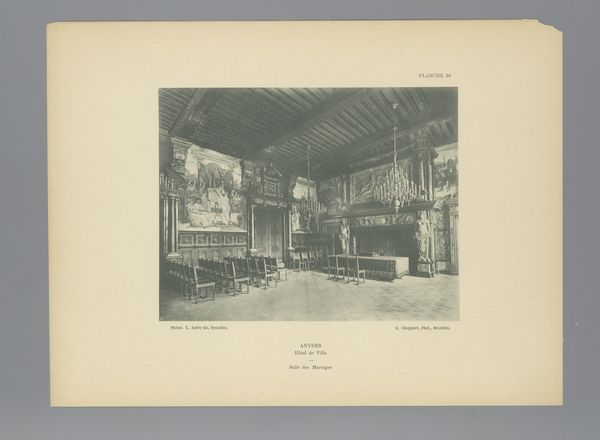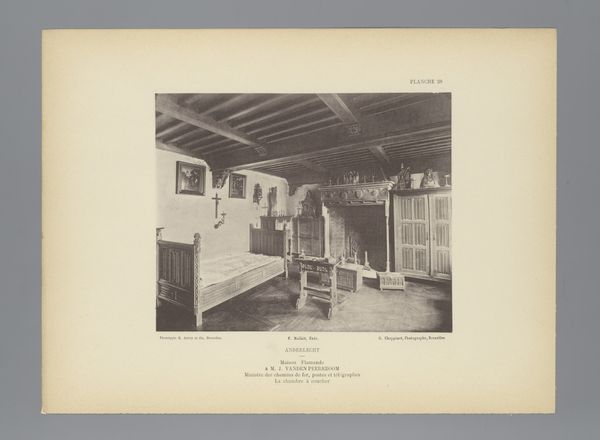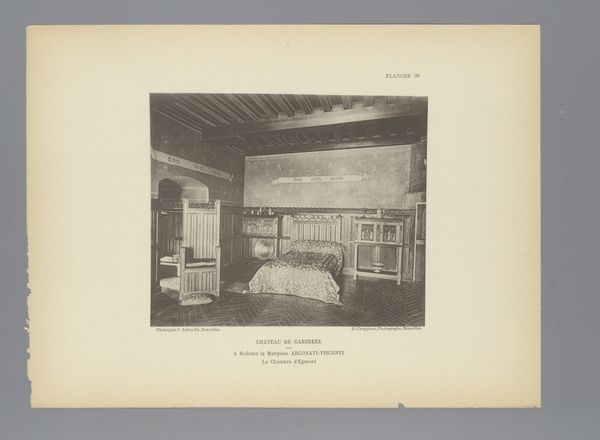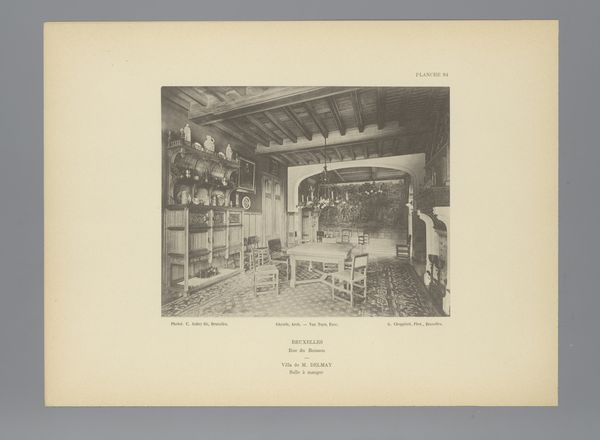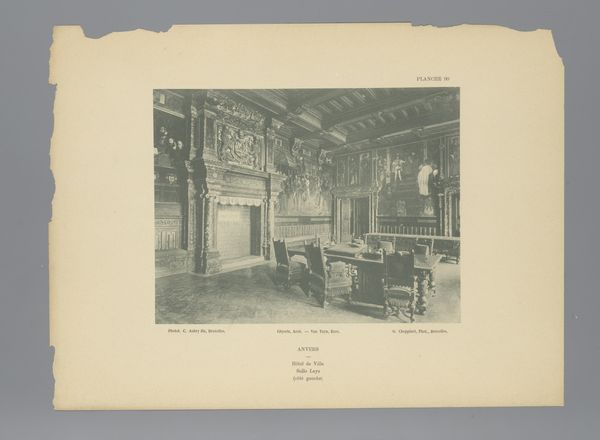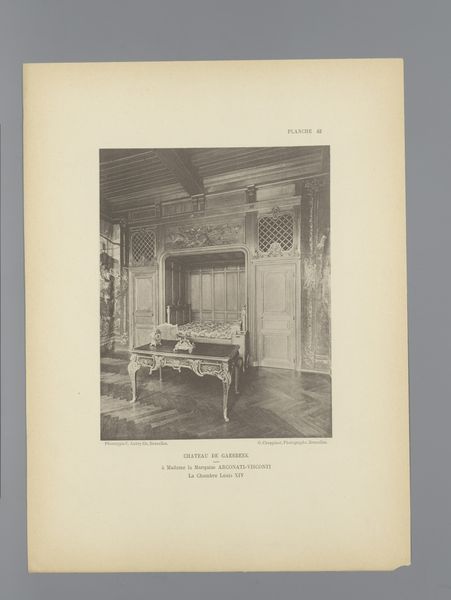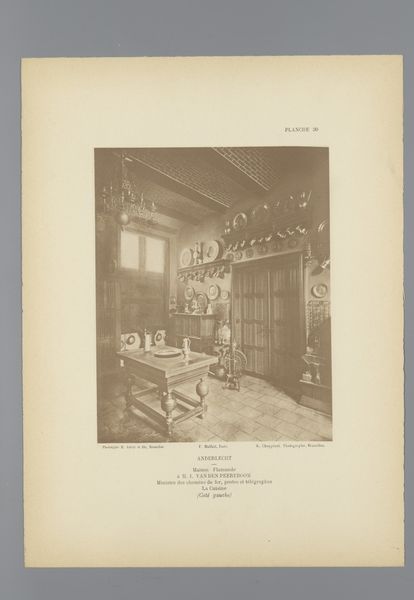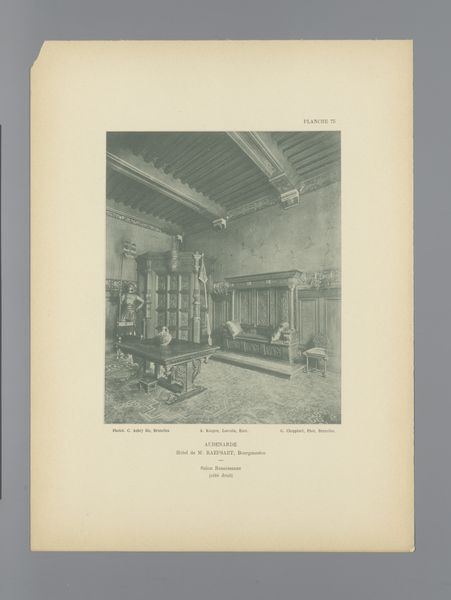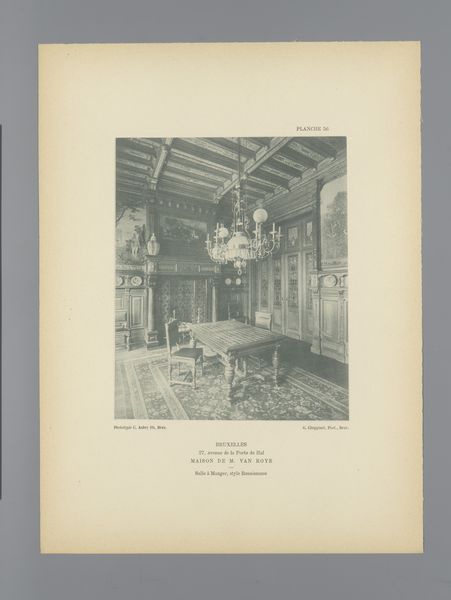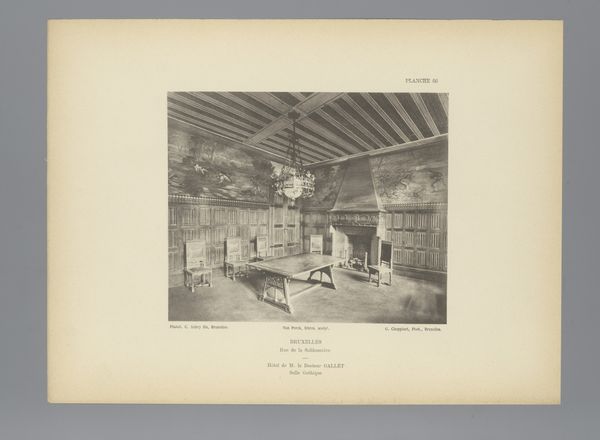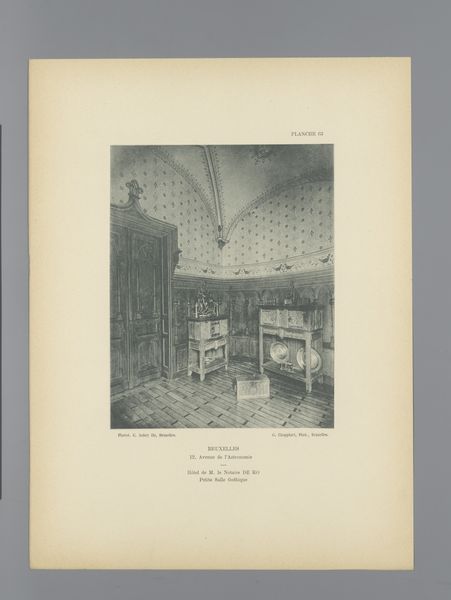
Gezicht op de vergaderzaal in renaissancestijl in het beursgebouw van Brussel, België before 1898
0:00
0:00
print, photography, architecture
# print
#
photography
#
cityscape
#
history-painting
#
architecture
#
realism
Dimensions: height 155 mm, width 202 mm
Copyright: Rijks Museum: Open Domain
Editor: So, here we have "View of the Renaissance-style Meeting Room in the Brussels Stock Exchange Building, Belgium" by G. Choppinet, dating to before 1898, rendered in print and photography. The rigid geometry feels very intentional... how do you see this piece? Curator: What immediately grabs me is the construction itself. Look at the craftsmanship evident in the woodwork, in every chair and panel. Then, consider the labor: someone, or likely a collective, designed, carved, assembled, and polished all of that. This wasn’t simply about creating a visually impressive room; it was about establishing a material and social hierarchy through painstaking production. Editor: A hierarchy? Can you elaborate on that? Curator: Certainly. Think about who would have commissioned this space, and who would have been excluded, both in terms of accessing this room and being involved in its making. The choice of Renaissance style also evokes a very specific sense of historical legitimacy and economic power, almost akin to propaganda, don't you think? Editor: Absolutely. It’s interesting to consider the photograph itself, not just the room, as a commodity – printed and circulated for consumption. It’s layered in intentionality, both in subject and its creation. Curator: Precisely! And those prints, the photograph, made the space accessible (at least visually) to a much wider audience. It created an impression of this council chamber without the need for presence. Did the method of circulation also establish its own socioeconomic dynamics? Editor: Wow, I never thought about it like that! I’m starting to see this not just as a historical record but as a complex interplay of materials, labour, and social power. Curator: Exactly. Art, at its core, is always tied to these elements, no matter how "refined" or "highbrow" it may seem. Always interrogate the 'how' and 'who' behind any artwork you are considering!
Comments
No comments
Be the first to comment and join the conversation on the ultimate creative platform.
